Keeping an Eye on the Back 40
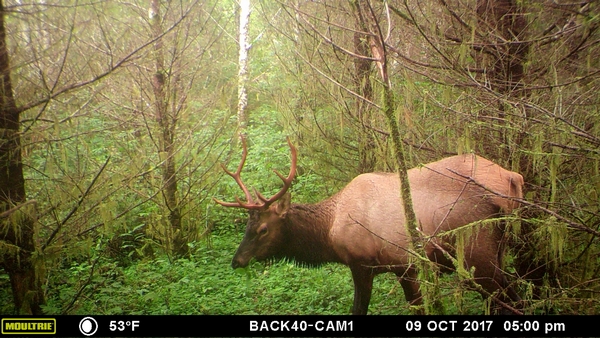
Regular, rigorous monitoring is an important part of good forest stewardship. No one knows this better than Chris Goodman.
Chris and his family own and take care of Back40 Quinault Forest, an aptly named 40-acre forest near Lake Quinault in Grays Harbor County.
Since acquiring the forest in 2008, monitoring has been a critical component of how Chris manages his forest. In conversation Chris mentions monitoring canopy closure, seedling growth, trees per acre, soil pH, and air temperature—not to mention elk browse, camera trap photos, bird box usage, elk herd movements, and bear damage. (Phew!)
His strategy has its roots in a 2007 monitoring workshop taught by NNRG, which Chris attended. He says the skills he learned at that workshop, including putting in a grid system and creating permanent plots, have produced multiple benefits over the years; a recent timber cruise was made easier and faster when the company doing the cruise decided to use Chris’s plots instead of creating their own from scratch. “It validated all the work I did. It’s the basis now for our timber plan.”
Monitoring for Cedar Reintroduction
With cost-share assistance through the Environmental Quality Incentives Program (EQIP), Chris and his family are bringing Western redcedar back to their forest. They’re planting cedar seedlings in and around old, decomposing cedar logs and stumps, in the hopes that readily available nutrients from the legacy cedars will bolster growth in the young ones. The monitoring involved is two-fold: first, Chris is comparing the growth (in height and diameter) of the 70 seedlings planted in nurse logs to other seedlings regenerating naturally in the forest. He takes measurements 1-2 times per year.
Chris has also placed cages around some seedlings and not others. He’s monitoring how well the cages, which he designed and built himself, are preventing browse. (Spoiler: they’re working so well that the Natural Resources Commission asked for the design template).
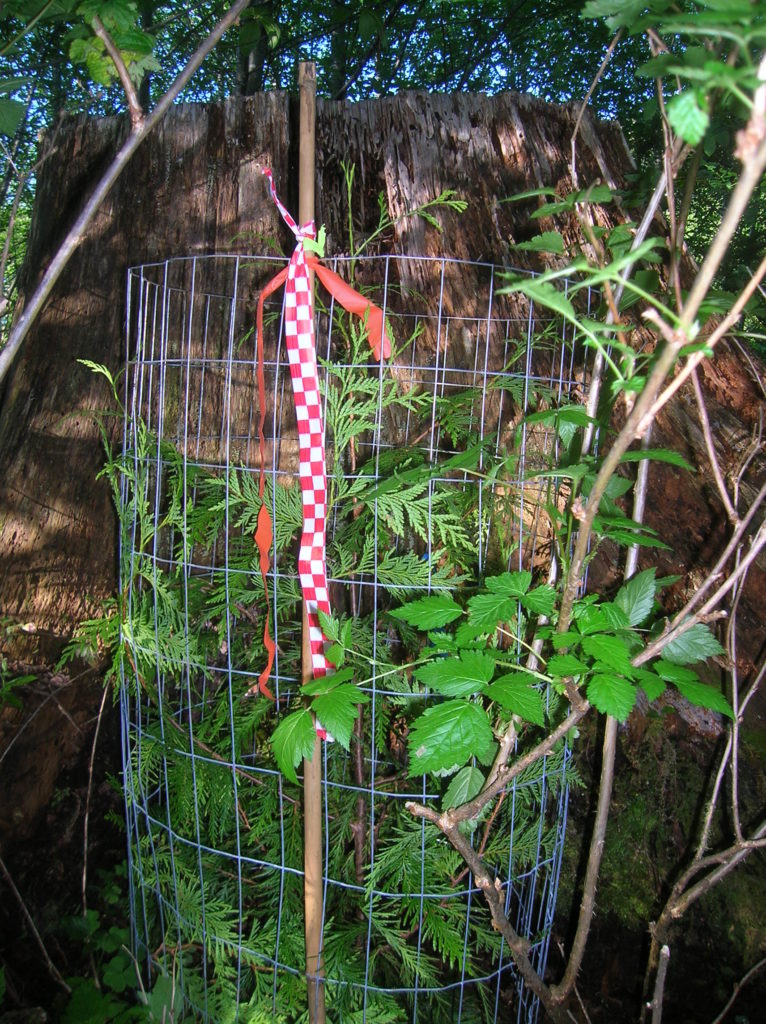
Monitoring for Wildife Health
Chris has been encouraging wildlife into his forest by building bird boxes and habitat piles, and these too are being vigorously monitored. Camera traps placed strategically around bird boxes, habitat piles, snags, and areas with bear damage have helped Chris form a deeper understanding the areas and habitats Back40 wildlife prefer.
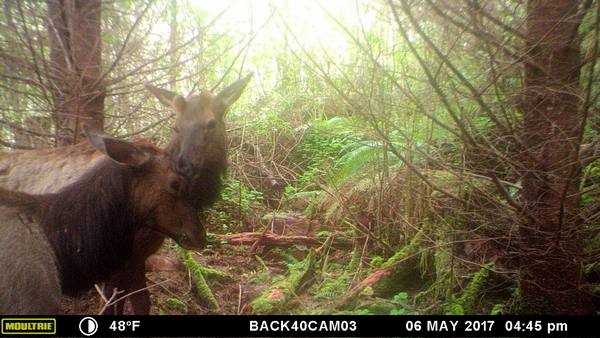
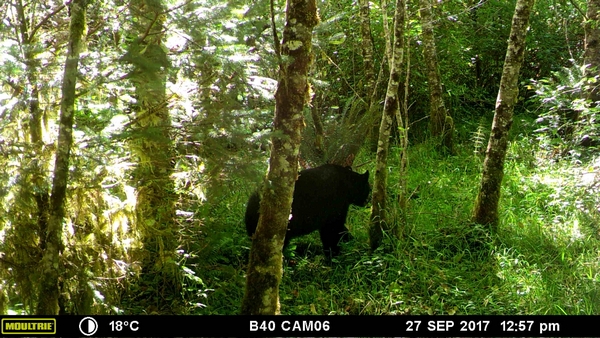
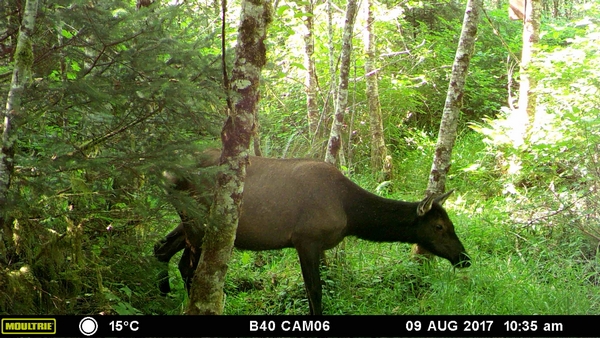

Monitoring and Experimentation
Aside from restoring legacy species such as grand fir and Western redcedar, Chris is interested in experimenting with bringing new species into his forest too. A stand of disease-resistant Western white pine is doing really well in the forest’s relatively moist soils, while the noble fir planted a while ago have all died out. Chris is testing out a few Nordmann fir (a species native to eastern Europe, often used as Christmas trees), which are doing quite well. (According to Chris, the elk love to bed around the Nordmanns, but don’t seem to browse.) Regular assessment of the growth and general health of his planted trees is enhancing Chris’s understanding of what’s working and what’s not.
The Benefits and Drawbacks of Monitoring
As any land owner who stewards more than a few acres of forest knows, monitoring takes time. It takes Chris and his family two full days to go tree to tree to take measurements—and that’s just for the nurse log plantings. That’s a heavy time commitment for anyone, especially for Chris’s kids, who have families of their own now and don’t live close to the forest.
Still, for Chris at least the benefits of monitoring outweigh the costs. “It gives us another reason to be in the forest.” And it’s the best way to really get to know your land inch by inch. “I can take people out there and they’re totally lost but I know exactly where I’m at and where I’m going.”
“Monitoring gives us a sense of…not worth, but well-being. I can watch and see how the forest is changing over time.”
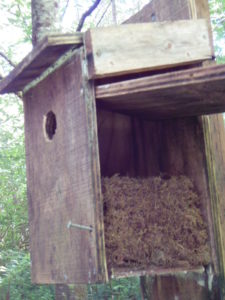

Leave a Reply